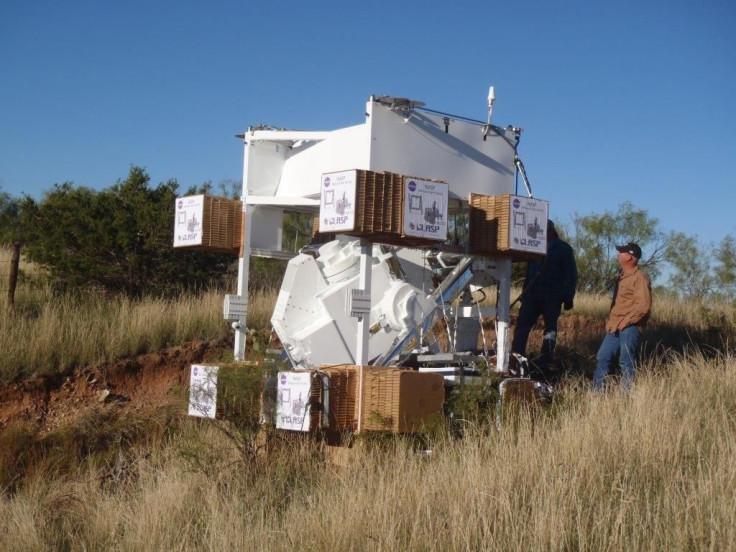NASA Scientists Develop New Device To More Accurately Observe And Track Planets; Equivalent To Measuring A Dime From 2 Miles Away

Scientists have developed a new device called the Wallops Arc Second Pointer, or WASP, which offers planetary scientists an improved platform to observe their targets in space.
High-altitude scientific balloons, which carry telescopes far into the stratosphere to help astronomers study Earth, the sun and stars, have not been very useful for planetary scientists as they need a more stable system to accurately point their instruments to track planetary targets as they move in the solar system. And, according to scientists, the newly developed WASP can point balloon-borne scientific instruments at targets with more accuracy and stability.
“Arc-second pointing is unbelievably precise,” David Stuchlik, the WASP project manager, said in a statement. “Some compare it to the ability to find and track an object that is the diameter of a dime from two miles away.”
WASP, designed at NASA’s Wallops Flight Facility in Wallops Island, Va., is meant to be a highly flexible, standardized system capable of supporting many science payloads. Thanks to the technology’s potential, the team of scientists working on WASP has received funding from the NASA Science Mission Directorate to further enhance the new capability as a standard support system, the space agency said.
WASP was first tested in 2011, then again in 2012, and most recently in September. During the last flight, a 30-story-tall balloon lifted a test unit of the HyperSpectral Imager for Climate Science, or HySICS, to an altitude of nearly 122,000 feet, from where WASP precisely pointed HySICS so that it could measure Earth, the sun and the moon.
Developed by Greg Kopp of the University of Colorado's Laboratory for Atmospheric and Space Physics, HySICS collected radiance data for nearly half of its eight-and-a-half hour flight and demonstrated improved techniques for future space-based radiance tests. Now, Kopp is preparing his imager for another balloon flight from Fort Sumner, N.M., in September.
WASP is also expected to direct the flight of the Observatory for Planetary Investigations from the Stratosphere, or OPIS, in September.
“Planetary targets move with respect to the stars in the background,” Terry Hurford, principal investigator for OPIS, said in the statement. “And because you need to track them to gather measurements, you need a system that can accurately point and then follow a target… High-altitude balloons offer us a unique, low-cost platform to carry out our planetary observations. This effort provides us with a unique opportunity to build a capability that we can leverage for future opportunities. WASP gives us a new platform.”
For more information about WASP, click here.
© Copyright IBTimes 2024. All rights reserved.












